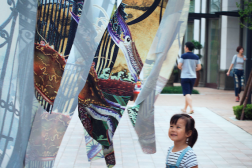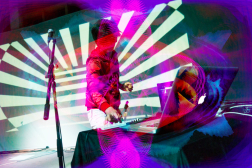
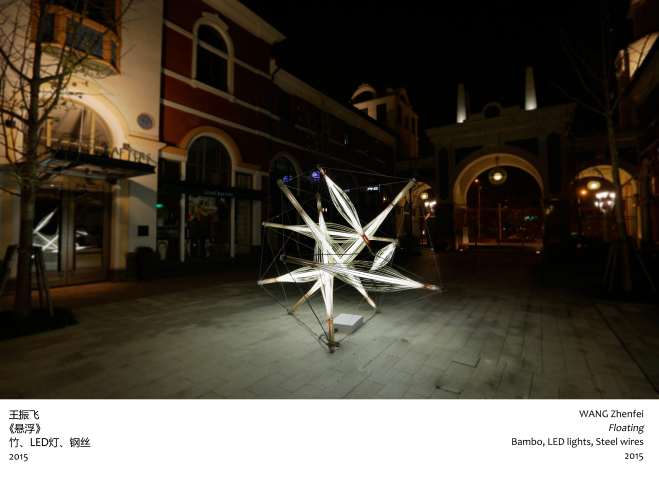
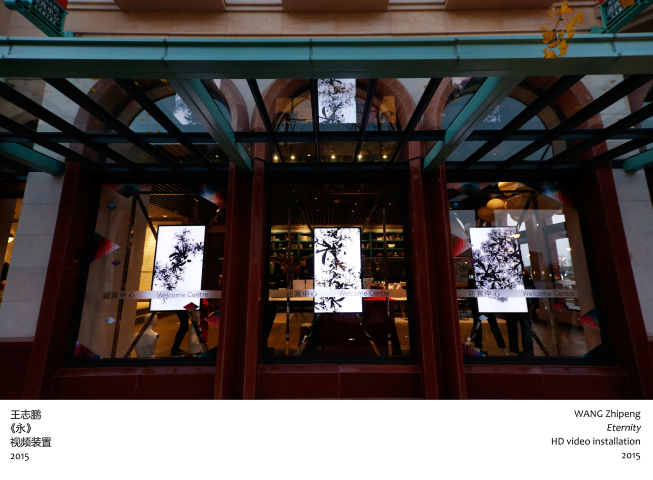

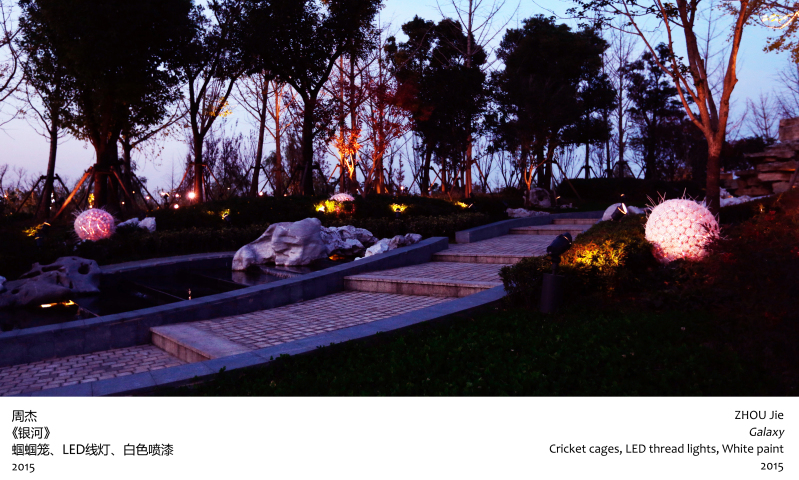
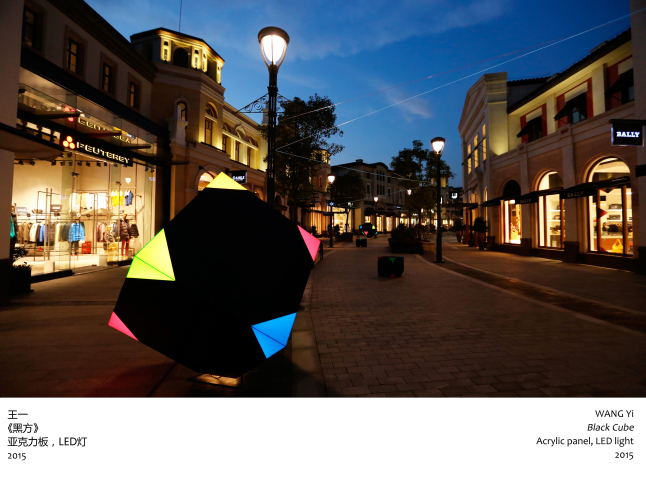
Festival of Lights at YI OU LAI Suzhou
Duration: December 5th, 2015 to February 15th, 2016
This winter Davide Quadrio, Arthub Founder and Director, has invited six artists to bring warmth and inspiration to visitors at YI OU LAI Suzhou, with works that explore the power of light and the spirit of celebration. Festival of Lights is made possible by artists who understand and can accentuate the Village’s stunning architecture with their work.
The theme of this year’s festival stems from an idea initiated by Chinese artist Zhou Jie in 2014. Last year, artists explored the ability of traditional Chinese craftsmanship to unexpectedly become objects of design. YI OU LAI Suzhou asks five international artists to develop this idea further. With new installations in the Suzhou Village garden, participating artists lead us on a treasure hunt that explores the fundamental truths within Chinese culture and beyond.
In 2014, the Village cooperated with set designer Zhou Jie and experiential art creators Recipient Collective for the premiere of a Thousand Silk Threads. For this year’s festival, previously inaugurated works from the performance will be expanded upon with updated installations. Zhou Jie’s Galaxy combines lights to create effervescent cloudlike orbs. The artist’s sculptures are made of bamboo cricket cages, which are popular children’s toys in China. The spheres are a metaphor for fallen stars. These astronomical creations intend to remind visitors of summer nights—full of buzzing insects, natural surroundings and family.
Artist and architect Wang Zhenfei creates two light installations: Up and Floating. The first work presents bamboo pieces produced in multitude—as a dramatic intervention in one of the Village’s many outdoor spaces, an architectural creation formed from lights. The bamboo shafts precariously dangle a light at the top, but possess an element of stability at the base. This work’s simplicity in form contrasts the next; Floating has a design that is both complex, but simultaneously precise. Zhenfei crafts a sculptural piece from bamboo and LED lights that rouse a deeper appreciation for the architecture of the Village. Similar to Zhou Jie’s pieces Zhenfei’s sculptures are illuminated from their core. The use of bamboo and other traditional materials show Wang Zhenfei’s innovative abilities within contemporary Chinese art.
The holiday program also shows Eternity, a three-channel animation in the Welcome Center by young artist Wang Zhipeng from the shanhu fool collective. Zhipeng deconstructs the calligraphic Chinese character for “eternity” – yong – to show that the world is in a constant state of flux, with no beginning and no end. This work is without boundaries—the work inspires feelings of unending continuation in which the images can be recreated indefinitely.
Venture away from this timeless installation and follow Stefania Galegati’s Beginning Moonwalk into the open night sky. Stefania is not only an artist, but a transcultural adapter, who seeks to identify the unifying root of all cultures. Every person is tethered to this world by their roots—be that their sense of home and community, their value system and loved ones, or their creative outlets and work efforts. Stefania believes that the root of all cultures transcends language or location. For her installation in Suzhou she has selected two famous Chinese fables to be transcribed in ink on the Village floor. By catching glimpses of familiar lines from The Old Man Yugong Moves the Mountains and Chang E flies to the Moon the artist is literally and metaphorically drawing visitors back to their roots.
As they twist and turn alongside Stefania’s meandering expressions shoppers encounter Wang Yi’s colorful site-specific installation Black Cube. The self-standing cube is black at its center, with corners that glow in exaggerated contrast. White lights are decomposed into primary colors—creating a dynamic and unexpected pause. The black surface allows the cube to disappear into darkness, with only the colorful junctions to highlight the installation’s volume.
Continuing on, Wang Yi’s work brings us to Cocoon, an installation by Nie Kaiwei. The geometric exactitude of the artist’s pure white structure creates a passage way. The work is the ideal center of the Village—it expresses the metamorphosis from antiquity to present day. The glowing net which surrounds the core structure of the installation is constructed from silk, just like the caterpillar nestled in its silk cocoon. The artist’s work extends beyond a visual literality to represent the internet, which abstractly connects people through a virtual reality. This is Nie Kaiwei’s goal: like the Silk Road, which linked the East and West two thousand years ago, the artist hopes to draw people together, to find a way for them to connect in the present and future.
Like the points of a shining star, this year’s artists will throw light into the four corners of YI OU LAI Suzhou, providing a dazzling beacon which points toward fresh perspectives. The group show mimics and challenges the impressive architecture of the Village, while also encouraging reflection on individual identity within both local and international cultures. This winter make sure to see YI OU LAI Suzhou light up the night.
Photo credit Zhou Zihan
